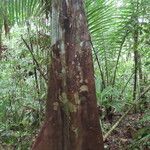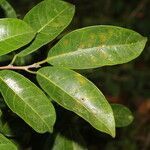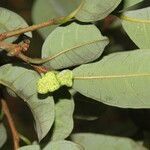A tall tree. It has large buttresses. The small branches have round scars where the stipules fell off. The leaves are simple and alternate. They have a pointed tip. The leaves are dark green above and paler underneath. The veins are yellow underneath. Broken leaves and twigs drip white latex. The flowers are yellow on small disk shaped heads.








